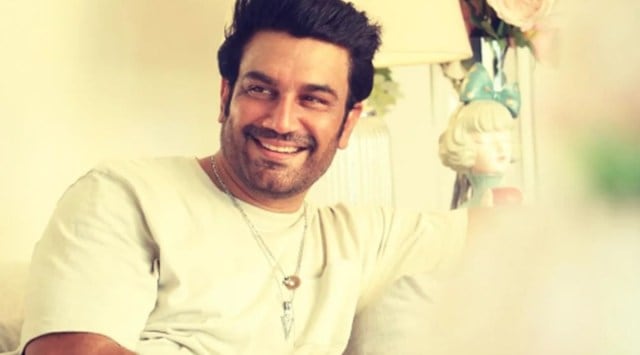📣 For more lifestyle news, click here to join our WhatsApp Channel and also follow us on Instagram
Sharad Kelkar, who dubbed for Prabhas’ character Raghava in Adipurush, recalls his struggle with stammering
With me particularly, there was a breathing issue. It is not yet 100 per cent gone. A lot of times I get stuck while doing a scene. There are a few letters that need a specific kind of breathing, expressed actor and voice artist Sharad Kelkar
 Sgarad Kelkar on overcoming stammering (Source: Sharad Kelkar/Instagram)
Sgarad Kelkar on overcoming stammering (Source: Sharad Kelkar/Instagram) Sharad Kelkar, the voice behind Adipurush’s Raghava character played by actor Prabhas, reveals he overcame stammering by controlling his breathing pattern. The actor and voice artist shared that there are different kinds of stammering and one needs to analyse why it is happening to work on it.
“What I suffered, I don’t want children to suffer. There are a few which are neurological stammer, a few may be physical like breathing, or a lazy tongue such that you think very fast but can’t speak with that speed. So stammering comes from this. You have to analyse why exactly it is happening. It takes a lot of time,” said Kelkar, in an interview with Humans of Bombay‘s How The Hell Did I Do It? talk show hosted by Karishma Mehta.
“I realised that my breathing pattern was completely wrong. I worked a lot on it. I observed a lot of actors and people…how they speak, and how they sound so nice. With me particularly, there was a breathing issue. It is not yet 100 per cent gone. A lot of times I get stuck while doing a scene. There are a few letters that need a specific kind of breathing. So, yes you can overcome stammering by analysing why it is happening, and then try to rectify it,” shared Kelkar, who has also dubbed for Bahubali.
Let’s understand more about stammering, also called stuttering, and why it occurs.
A speech disorder that causes frequent problems in fluency and flow of speech, stuttering can be classified into three categories: developmental stuttering, neurogenic stuttering, and psychogenic stuttering, said Dr Shrey Srivastav, MD (Internal Medicine), Sharda Hospital, Noida.
Stammering is when:
1) you repeat sounds or syllables – for example, saying “mu-mu-mu-mummy”
2) you make sounds longer – for example, “mmmmmmummy”
3) a word gets stuck or does not come out at all
4) anxiety about talking
5) limited ability to effectively communicate.
The speech difficulties of stuttering may be accompanied by
1) Rapid eye blinks
2) Tremors of the lips or jaw
3) Facial tics
4) Head jerks
5) Clenching fists
According to Dr Srivastav, the cause of stammering can be a result of a head injury, stroke or progressive neurological condition, or certain drugs, medicines, or psychological or emotional trauma, or stress.
Changes in brain anatomy have been noted among children (and adults) who stammer, said neurologist Dr Sudhir Kumar, Apollo Hospital, Hydrabad. “The left hemisphere is involved in speech production. In research studies, gray matter volume (GMV) is reduced in speech-relevant regions: the left inferior frontal gyrus, and bilateral temporal regions. Reduced integrity was found in the left white matter tracts underlying the motor regions for face and larynx in children in whom stammering persists,” said Dr Kumar.
Treatment
Indirect therapy: This involves parents making changes to the way they communicate and the home environment, rather than focusing directly on their child’s talking, said Dr Srivastav.
Direct therapy: Dr Srivastav also said that direct therapy services including the Lidcombe Program and cognitive behavioural therapy (CBT) can be used by trained professionals.
Dr Srivastav also listed feedback devices that are used:
Delayed auditory feedback (DAF) – these play your voice back to you a fraction of a second after speaking.
Frequency-shifted auditory feedback (FSAF) – these play your voice back to you at a lower or higher frequency.
Combined DAF/FSAF devices — these devices are often fitted inside or around the ear, similar to a hearing aid, and can help improve the fluency of some people’s speech, said Dr Srivastav.
📣 For more lifestyle news, follow us on Instagram | Twitter | Facebook and don’t miss out on the latest updates!
📣 For more lifestyle news, click here to join our WhatsApp Channel and also follow us on Instagram

Photos


- 01
- 02
- 03
- 04
- 05























